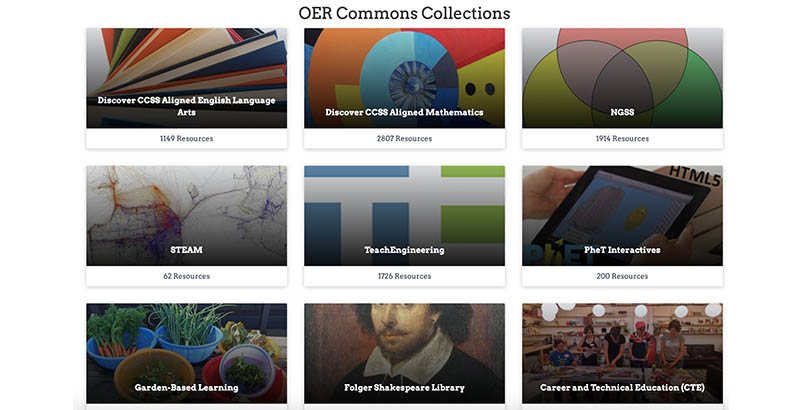DeBarger: As Schools Reopen, Teachers Need Materials That Can Keep Their Students Engaged & Learning. Open Educational Resources Can Help

As schools start reopening their doors for the first time in nearly a year, educators are beginning to redefine teaching and learning in a post-lockdown era. Much of the focus has been on the limitations of this new school environment — from masking and social-distancing requirements to the difficulties of juggling separate groups of students learning in person and remotely. But what opportunities might there be for student learning?
One way educators have been reshaping the future of education is through the materials they use to engage students. Finding that many traditional textbooks don’t suit remote learning, some teachers have turned to open educational resources to better meet their — and their students’ — needs. Open educational resources are free for educators and students to use and share, enabling widespread access to high-quality educational materials. They can be anything from a single lesson to an entire curriculum. And because many carry a Creative Commons license, unlike traditional commercial textbooks, anyone can legally modify and reuse them without running into copyright restrictions. In this way, educators can easily adapt these resources to fit different learning needs, accommodate local requirements, include perspectives from historically marginalized groups or reflect the latest developments and data. In short, OER meet the current moment that many educators are facing.
Noah Holloway, a sixth-grade science teacher at Kansas’s Valley Center Middle School in Kansas, has used an OER science curriculum called OpenSciEd throughout the pandemic. (The Hewlett Foundation, where I am a program officer, is a supporter of OpenSciEd.)When his school shifted to remote learning last spring, he was able to modify the units to work better in a remote-learning setting. Now that he’s teaching in a hybrid model, with some students learning remote and some in person, he’s adapted and combined the open content so all his students, regardless of how they’re learning, have access to inquiry-driven learning materials. For next year, Holloway is considering using the units he adapted for remote learning to give extra practice to students who need remediation.
Holloway says the open resources allow his students to “use their own language to express themselves” when learning about science, which helps kids with different abilities and at different levels learn and grow. Unlike traditional textbooks, the open materials can be adapted to support students’ own investigations and discoveries, and the school can use funds that would normally pay for science textbooks to purchase hands-on equipment — especially important as many districts face massive budget cuts.
The events of this past year prompted another science teacher, Bridget Kyser of Montera Middle School in Oakland, California, to rethink how she and her colleagues were engaging their students, most of whom are children of color. She noticed they were asking questions that the district’s science curriculum didn’t address — for example, about the impacts of systemic racism on their communities. Kyser wanted to find materials that could help them access facts about these issues and empower them to seek solutions.
Now, she and her colleagues are adapting open resource science units from the University of California at Berkeley’s Web-based Inquiry Science Environment (WISE) platform (which the Hewlett Foundation also supports), to weave her students’ interest in social justice into lessons on how air pollution can lead to health issues in certain neighborhoods. The units help students understand chemical reactions and how to interpret data, while encouraging them to think critically about social issues and draw their own conclusions. The lessons can be made more relevant to Kyser’s students with modifications that reference a nearby school where lead was found in the water, and she can change words or graphs so her students can better understand and connect with them.
A recent RAND study showed that educators most value instructional materials that are easy for them to use, engaging and appropriately challenging for their students. Open educational resources fulfill all these requirements. They can be easily accessed — without access fees — by teachers and customized with content that is appropriate and relevant to keep students engaged and challenged. These resources can help educators discover materials and insights that meet our nation’s current educational challenges — and shape a more equitable future for our students.
Angela DeBarger is program officer in education at the William and Flora Hewlett Foundation.
Get stories like these delivered straight to your inbox. Sign up for The 74 Newsletter

;)